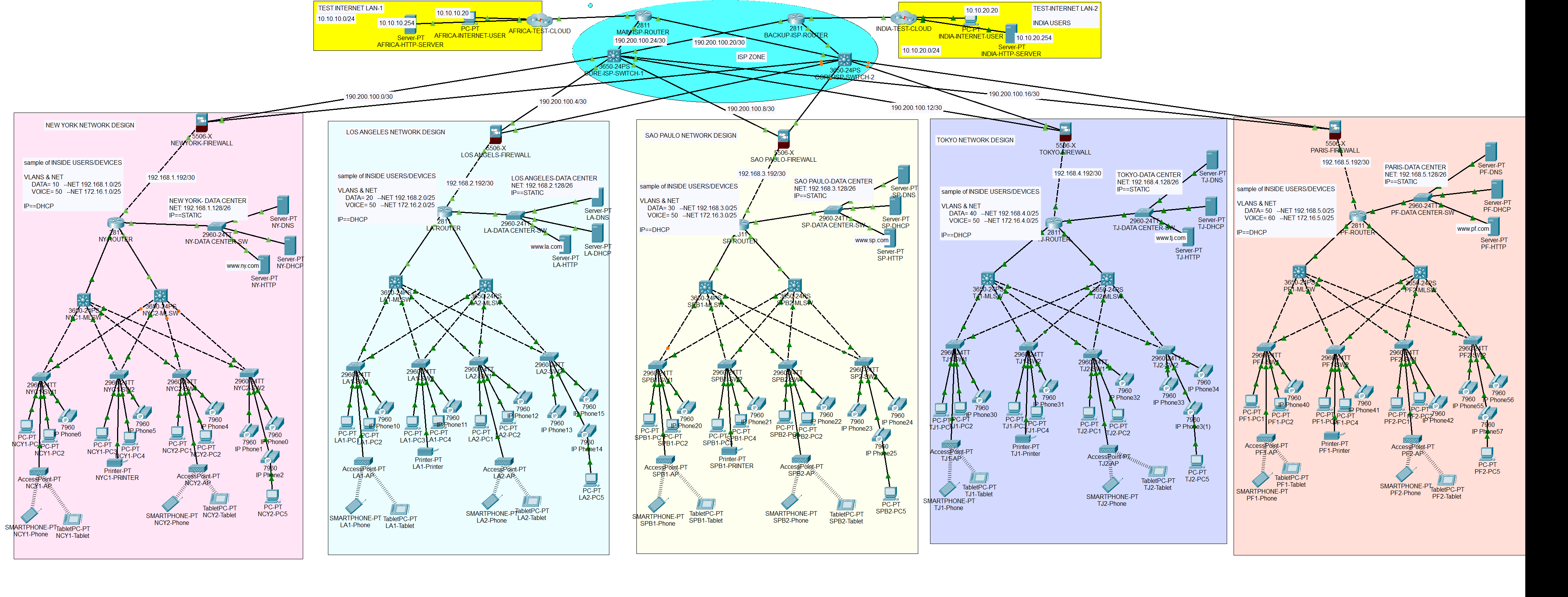Secure Company Network System Design and Implementation
Scenario Description: Secure ISP Company Network:
International TechCorp, a multinational company with five international branches, requires a robust and secure network infrastructure to ensure seamless communication and data sharing between branches while connecting to global customers. Each branch operates with its own infrastructure, including dedicated firewalls and datacenters, tailored to its local needs. To provide global connectivity and serve customers across continents, the network integrates with an international ISP, ensuring high-speed and reliable access.
Network Design:
Each branch is equipped with a state-of-the-art local network infrastructure featuring a centralized datacenter hosting critical services such as DHCP, DNS, VoIP, and file servers. Firewalls are deployed at each branch to secure internal systems against external threats, with intrusion prevention systems enhancing security further. Local VLANs segment traffic by department, ensuring efficient bandwidth utilization and data privacy.
To achieve global connectivity, all branches are linked to an international ISP, creating a unified Wide Area Network (WAN). This WAN leverages MPLS technology for high-speed and low-latency communication. Dynamic routing protocols like OSPF are implemented to ensure optimal path selection and network redundancy. NAT and PAT configurations enable secure internet access while protecting internal network structures.
- Branch Infrastructure: - Dedicated datacenters at each branch hosting DHCP, DNS, VoIP, and file servers
- Network Segmentation: - VLANs for departmental traffic isolation and efficient bandwidth utilization
- Global Connectivity: - WAN interconnecting all branches via an international ISP - MPLS technology for high-speed and low-latency communication between branches
- Routing Protocols: - OSPF for dynamic routing and optimal path selection
- VoIP Technologies
- Address Translation: - NAT and PAT configurations for secure internet access and internal network protection
- Redundancy and Disaster Recovery: - Backup datacenters at each branch for failover in case of primary datacenter failures
- Network Security: - End-to-end encryption for secure data transmission between branches - Access Control Lists (ACLs) for traffic regulation and prevention of unauthorized access
- Network Monitoring: - Centralized tools for real-time network performance tracking and threat detection
- Firewalls at each branch for enhanced security and traffic inspection
The network topology below satisfy the user requirements above and everything is verified, tested and working fine.
